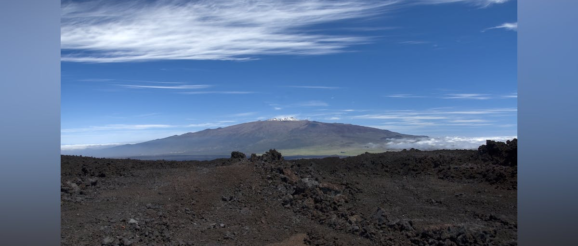Rethinking Extraterrestrial Life: When It’s Time to Think Really New Thoughts | Healthcare Innovation

I found the cover story in the February issue of Scientific American to be very thought-provoking. Indeed, the article is about how scientists are having to rethink their thought processes as they explore the possibility that some form of life might exist outside of the Earth.
Writer Sarah Scoles begins thus: “Sarah Stewart Johnson was a college sophomore when she first stood atop Hawaii’s Mauna Kea volcano. Its dried lava surface was so different from the eroded, tree-draped mountains of her home state of Kentucky. Johnson wandered away from the other young researchers she was with and toward a distant ridge of the 13,800-foot summit. Looking down, she turned over a rock with the toe of her boot. To her surprise, a tiny fern lived underneath it, having sprouted from ash and cinder cones. ‘It felt like it stood for all of us, huddled under that rock, existing against the odds,’ Johnson says. Her true epiphany, though, wasn’t about the hardiness of life on Earth or the hardships of being human: It was about aliens. Even if a landscape seemed strange and harsh from a human perspective, other kinds of life might find it quite comfortable.”
And, “Later,” Scoles writes, “Johnson became a professional at looking. As an astronomy postdoc at Harvard University in the late 2000s and early 2010s she investigated how astronomers might use genetic sequencing—detecting and identifying DNA and RNA—to find evidence of aliens. Johnson found the work exciting, but it also made her wonder: What if extraterrestrial life didn’t have DNA or RNA or other nucleic acids? What if their cells got instructions in some other biochemical way?” Her typed musings would later turn into the 2020 popular science book The Sirens of Mars, in which she mused over the possibility that any beings living somewhere other than Earth might be fundamentally totally different from earthlings. As Scoles notes, “Much of astrobiology research involves searching for chemical ‘biosignatures’—molecules or combinations of molecules that could indicate the presence of life. But because scientists can’t reliably say that ET life should look, chemically, like Earth life, seeking those signatures could mean we miss beings that might be staring us in the face.” And, she’s plunging into the deep end now in that regard, as the principal investigator in a new NASA-funded initiative called the Laboratory for Agnostic Biosignatures (LAB). “LAB’s research,” Scoles writes, “doesn’t count on ET having specific biochemistry at all, so it doesn’t look for specific biosignatures. LAB aims to find more fundamental markers of biology, such as evidence of complexity—intricately arranged molecules that are unlikely to assemble themselves without some kind of biological forcing—and disequilibrium, such as unexpected concentrations of molecules on other planets or moons. These are proxies for life as no one knows it.”
Of course, here on earth, there is still so much to discover in so many fields of endeavor. One of the most exciting discoveries that we make every year at Healthcare Innovation happens when we receive submissions to our annual Innovator Awards Program, whose entire purpose is to uncover pioneering work being pursued by teams in patient care and other healthcare organizations nationwide, and bringing them to you, our audience. In our cover story package (p. X), we share the narratives of four winning teams and seven runners-up; every one of these teams has analyzed a set of problems in U.S. healthcare delivery and come up with pioneering ways of doing things. We’re proud this year, as every year, to showcase pioneering innovation. We hope you will enjoy these articles and benefit from their content.
